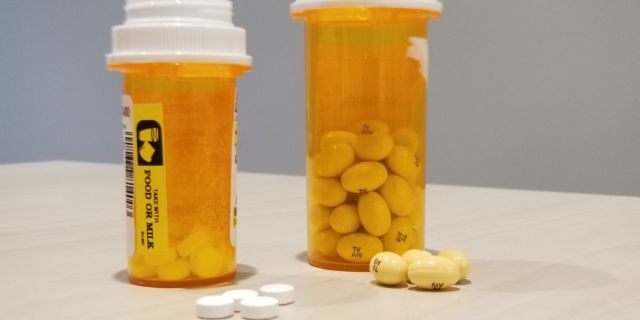[ad_1]
Doctor offers natural, no-needle approach to IVF
More couples struggling with infertility are turning to in vitro fertilization (IVF), but one of the biggest complaints about the process if the dreaded, and expensive hormone injections. Fox News’ Dr. Manny Alvarez sits down with a Columbia University fertility specialist to talk about their new needle-free approach to IVF.
If you or someone you know is struggling with infertility you’re not alone. In fact, 33 percent of American adults say that they or someone they know has used some type of fertility treatment to have a baby, and according to reports, in vitro births continue to rise in the U.S.
In vitro fertilization (IVF) is the process in which mature eggs are retrieved from a woman’s ovaries and fertilized by sperm in a lab. Then the fertilized egg(s) or embryo are implanted in the uterus, according to the Mayo Clinic.
In order to stimulate egg production, hormone medications are typically injected into a woman’s stomach or thighs twice a day. Since a typical IVF cycle can last around two weeks, women tend to use around 30 or more syringes in one cycle.

The injections are not only uncomfortable and sometimes painful for patients, but when IVF requires multiple cycles, the expense of these medications can become very costly.
Dr. Zev Williams, the Director at Columbia University Fertility Center said medication costs can vary depending on the individual couple’s insurance and dosing requirement.
“In some cases, the medications are fully covered by insurance, in some cases the costs are partially covered and in some cases the costs for medications are not covered at all. In those instances, the cost can be $5,000 or higher,” Williams told Fox News.
FIRST DRUG TARGETING POSTPARTUM DEPRESSION APPROVED BY FDA
To help women and couples struggling with infertility, Williams and his fellow doctors at Columbia developed a new and unique approach to IVF called CORAL-IVF, that “uses a combination of pills to cause the same effect as hormone injections.”
“The idea behind it actually came from a patient…[who] had failed many rounds of IVF in the past where she had taken all these injections, but in the end had very, very few eggs or embryos,” Williams said. “The goal of all these artificial hormones [is] to stimulate the ovaries to grow. We wanted to say, ‘well, can we help you take other pills instead of injections’ and instead of it being the artificial hormones, have these pills prompt your body to make the natural version of these hormones.”
The pills are a mix of Letrozole and Clomid, two medications that have been shown to stimulate ovulation.

(Columbia University Fertility Center)
“When we’ve looked how patients have done with maximum doses of injectable medications compared to the follow up cycle where they would use these oral medications we actually see similar numbers of eggs being retrieved but more usable embryos, which is really one of the goals that we’re trying to get to,” Williams said.
Since this service is so new, Williams said they are only taking patients for whom the standard approach has failed them, but they will counsel and consider patients who haven’t demonstrated any problems and just don’t want to go through the painful injections.
Not only does CORAL-IVF save women from daily injections, but Williams said there is the potential for huge cost savings.
“It [the medications] is typically about a $20 copay,” he said.
SMOKING WHILE PREGNANT DOUBLES RISK OF SUDDEN UNEXPECTED INFANT DEATH, STUDY FINDS
Williams also pointed out that the side effect profiles for these medications are generally safe as well. Some reports say Letrozole and Clomid can cause nausea, vomiting, headaches and muscle aches or pains.
With the use of IVF becoming more prevalent in the U.S., some couples may wonder why? Is it because more women feel empowered to talk about their struggles or are more couples dealing with infertility issues? Williams said it’s probably a combination of a few factors.
The first is the success of IVF itself.

“It’s something that’s a greater option if when IVF had a poor success rate, let’s say 10 percent, a lot of people would say it’s not worth going through all of this for a 10 percent success rate. Now we’re seeing success rates that are dramatically higher,” Williams said.
According to 2016 CDC report, 31 percent of all single IVF cycles lead to pregnancy for women ages 35 and under.
Another example for the rise in IVF procedures is that the process can help a greater population of patients. When IVF was first introduced in the 1980s, most women who were using it had infertility-causing medical conditions like non-functioning fallopian tubes. Today IVF can help treat age-related infertility issues as well as genetic disease concerns.
CLICK HERE TO GET THE FOX NEWS APP
“We can do it in cases where the male may have very low sperm, even just a couple of sperm that are viable we can use that to help them,” Williams said. “And now we’re seeing more and more couples who have genetic diseases, things like Tay-Sachs, cystic fibrosis, who want to be insured a child is not effected can go through it [IVF].”
[ad_2]
Source link

